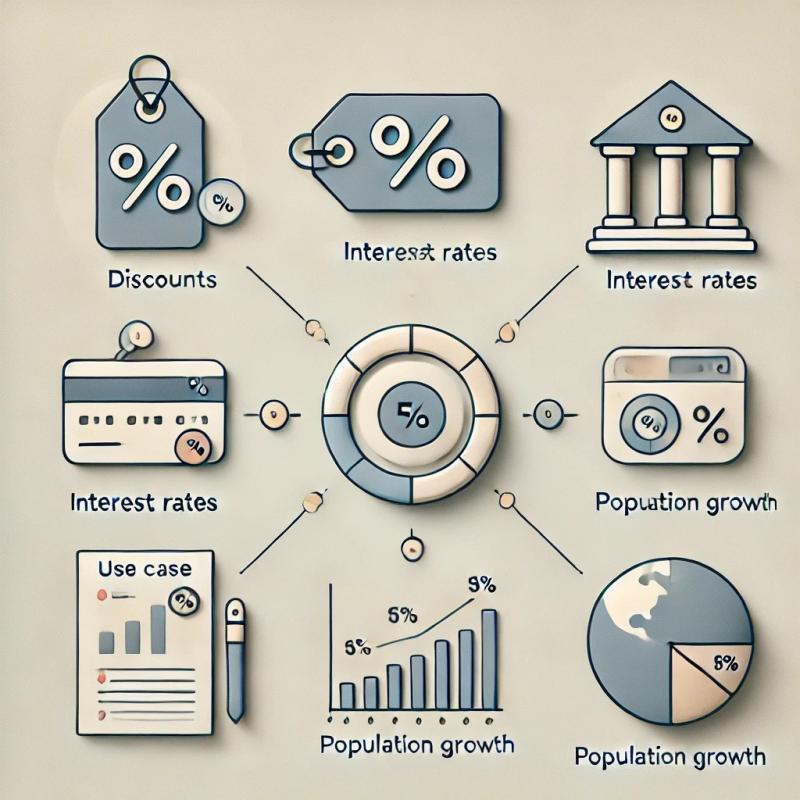Top 5 Uses of Percentage: Practical Applications with Examples

Percentages are a fundamental concept in mathematics, widely used in various fields and everyday life. Whether you're shopping for discounts, analyzing data, or managing finances, percentages help simplify and make sense of numbers. In this article, we'll explore the top five uses of percentages, complete with practical examples to illustrate their importance.
1. Calculating Discounts and Sales Prices
One of the most common uses of percentages is calculating discounts during sales. Retailers often use percentages to offer discounts on products, and as a consumer, understanding how to calculate these can help you make informed purchasing decisions.
Example: Suppose a jacket originally costs $100, and the store is offering a 20% discount. To calculate the discount:
- Discount = 20% of $100 = 0.20 × $100 = $20
The price after the discount would be:
- Final Price = $100 - $20 = $80
Understanding this allows you to quickly assess how much you'll save and what the final price will be, helping you make better purchasing decisions.
2. Interest Rates in Banking
Percentages play a crucial role in finance, especially when it comes to interest rates on loans, savings accounts, and credit cards. Knowing how to calculate interest can help you understand how much you'll pay over time or how much you'll earn on your savings.
Example: If you deposit $1,000 into a savings account with an annual interest rate of 5%, the interest earned after one year would be:
- Interest = 5% of $1,000 = 0.05 × $1,000 = $50
By the end of the year, your total savings would be:
- Total Savings = $1,000 + $50 = $1,050
Understanding percentage calculations can help you make better financial decisions, whether you’re saving money or taking out a loan.
3. Data Analysis and Statistics
Percentages are widely used in data analysis and statistics to compare data points and understand trends. They help in making data more accessible and easier to interpret, especially when dealing with large datasets.
Example: Imagine a company that tracks customer satisfaction. If 600 out of 1,000 customers are satisfied, the satisfaction rate can be expressed as:
- Satisfaction Rate = (600/1,000) × 100% = 60%
This percentage provides a clear and concise way to communicate how well the company is doing in terms of customer satisfaction. For those who frequently work with percentages, whether in personal finance or professional settings, using an online percentage calculator can save time and ensure accuracy.
4. Calculating Grades in Education
In education, percentages are often used to calculate grades and assess student performance. Teachers and students alike use percentages to determine scores on assignments, tests, and overall course performance.
Example: If a student scores 45 out of 50 on a test, the percentage score would be:
- Percentage Score = (45/50) × 100% = 90%
This score might correspond to a letter grade of A, depending on the grading scale used. Understanding how percentages work can help students track their academic progress and set goals for improvement.
5. Understanding Population Growth and Economics
Percentages are also essential in understanding population growth, inflation rates, and other economic indicators. They help policymakers, economists, and researchers analyze trends and make informed decisions.
Example: If a country's population grows from 1 million to 1.05 million in a year, the population growth rate would be:
- Growth Rate = [(1.05 million - 1 million)/1 million] × 100% = 5%
This percentage gives a clear understanding of how fast the population is growing, which can have implications for resource allocation, urban planning, and economic development.


Comments